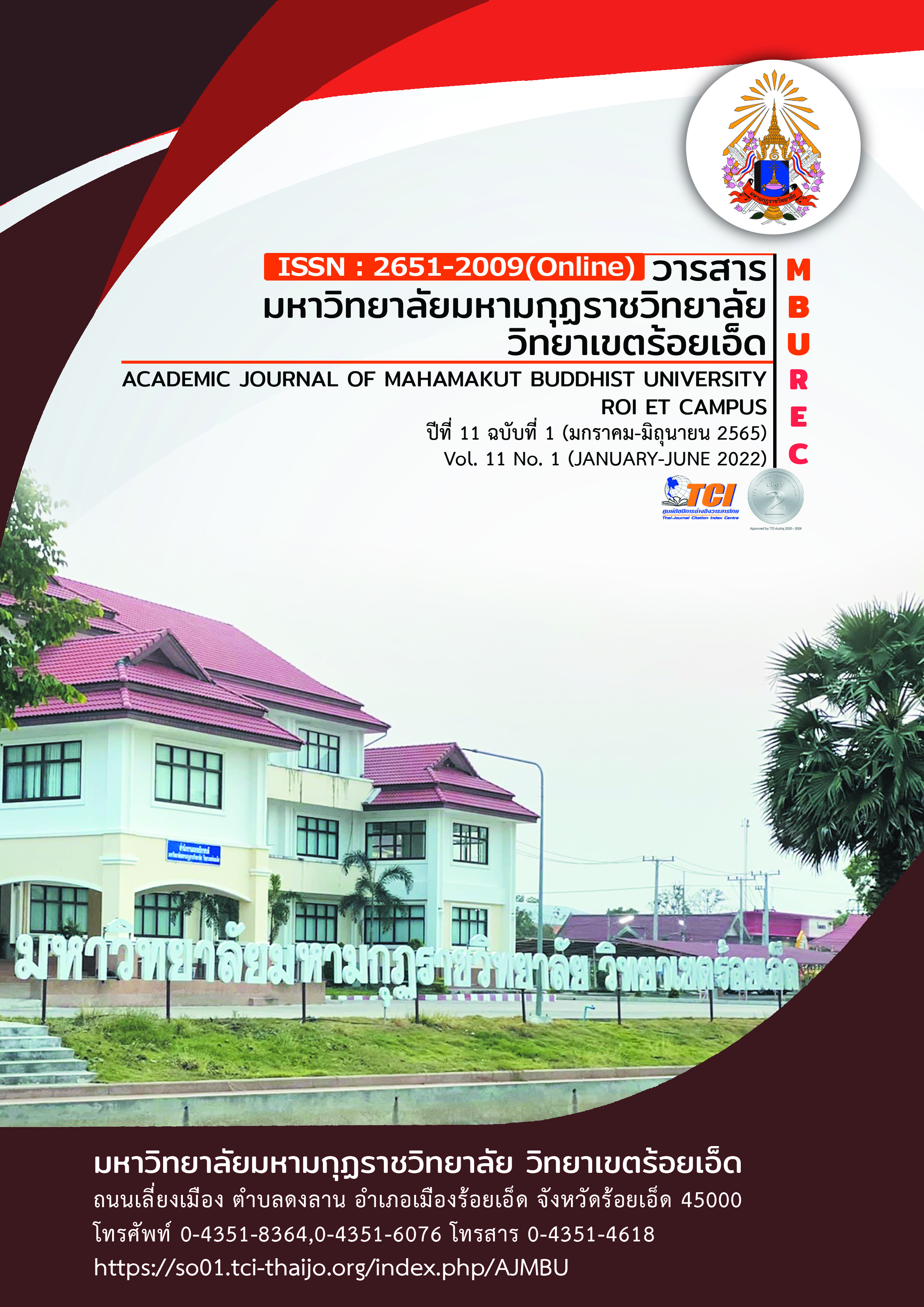THE PATTERNS OF THE FUNERAL OF BUDDHISTS IN PHUKHAO THONG SUB-DISTRICT, NONGPHOK DISTRICT, ROI ET PROVINCE
Main Article Content
Abstract
The objectives of this research article were 1) to study the concept of a funeral arrangement of Buddhists in Phu Khao Thong Sub-district, 2) to study patterns of funeral arrangements of Buddhists in Phu Khao Thong Sub-district, Nong Phok District, Roi Et Province. This research is a qualitative research. The sample groups used in the interview were 50 people. The research instrument was the observation interview form. Data analysis by using document data and field data for analysis with the qualitative data analysis method by content analysis and synthesis content analysis and inductive inference and presented in a descriptive and analytical way.
The research results were found that: 1. the concept of the intended funeral in accordance with the Buddhist guidelines; the desires of Buddhists in Phu Khao Thong Sub-district, Nong Phok District, Roi Et Province. Phu Khao Thong subdistrict community, being a Buddhist community, has the following practices when there is a person who is terminally ill: treating the deceased body, funeral prayer, the ordination of the descendants for merit dedicating to the deceased and leading the deceased body procession for cremation, cremation ceremony, and keeping the ashes of the deceased body and merit-making. All of which are the specific characteristics of the community. At present, the funeral arrangement of the community has been changed according to fashion. Back in the past, the deceased body was buried before being cremated, but nowadays the cremation and merit-making are usually done right away. Although each community has the funeral arrangement according to the host, the procedures of the ceremony still follow the tradition and practices that have been inherited from the ancestors based on the original and Buddhist beliefs with the purpose of dedicating merits for the deceased. 2. A model of the funeral arrangement for Buddhists in Phu Khao Thong Sub-district, Nong Phok District, Roi Et Province. From studying a model of the funeral arrangement by Buddhists in Phu Khao Thong subdistrict community, Nong Phok district, Roi Et province, it was found that there consist of 4 aspects as follows: 1) The overall funeral arrangement. 2) Before the cremation. 3) On the day of cremation. 4) After the cremation.
Article Details

This work is licensed under a Creative Commons Attribution-NonCommercial-NoDerivatives 4.0 International License.
References
ปรานี วงษ์เทศ. (2534). พิธีกรรมเกี่ยวกับการตายในประเทศไทย. กรุงเทพมหานคร : ศูนย์มานุษยวิทยา มหาวิทยาลัยศิลปากร.
พระครูกัลยาณธรรมโฆษ (รุ่ง กลฺยาณโณ). (2554). การศึกษาคติธรรมจากประเพณีงานศพ: กรณีศึกษาชุมชนตำบลตรวจ อำเภอศรีณรงค์ จังหวัดสุรินทร์. วิทยานิพนธ์พุทธศาสตรมหาบัณฑิตสาขาวิชาพระพุทธศาสนา. บัณฑิตวิทยาลัย : มหาวิทยาลัยมหาจุฬาลงกรณราชวิทยาลัย.
พระอธิการพิพัฒน์พงษ์ ฐานวุฑฺโฒ (ใจกว้าง). (2554). ศึกษาความเปลี่ยนแปลงการจัดงานศพของชาวพุทธ: กรณีศึกษา บ้านหมุ้น ตำบลนาปรัง อำเภอปง จังหวัดพะเยา. วิทยานิพนธ์พุทธศาสตรมหาบัณฑิต สาขาวิชาพระพุทธศาสนา. บัณฑิตวิทยาลัย : มหาวิทยาลัย มหาจุฬาลงกรณราชวิทยาลัย.
พระอนุชิต ปทุมวณฺโณ (หวังวนรัตน์). (2549). การศึกษาเชิงวิเคราะห์เรื่องความตายในศาสนาดั้งเดิมของเผ่าม้ง. วิทยานิพนธ์ศาสนศาสตรมหาบัณฑิต สาขาวิชาพระพุทธศาสนา. บัณฑิตวิทยาลัย : มหาวิทยาลัยมหาจุฬาลงกรณราชวิทยาลัย.
รัตนะ ปัญญาภา และคณะ. (2562). รูปแบบการจัดงานศพเชิงสร้างสรรค์ของชาวพุทธในชุมชนชนบทตามทัศนะของผู้นำชุมชนในจังหวัดอุบลราชธานี. วารสารสันติศึกษาปริทรรศน์ มจร. 7(2). 287-301.
เสถียร โกเศศ. (2531). ประเพณีเกี่ยวกับชีวิตและการตาย. กรุงเทพมหานคร : แม่คำผาง.


